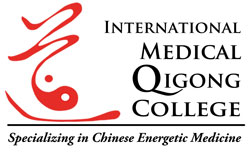In qigong, the use of breath work with individual physical movements, creative visualization, and perceptual intention are combined to focus on a specific purpose. This purpose or goal determines the specific type of exercises you choose to practice.
Regardless what type of qigong you practice, martial, medical, or spiritual, you'll find that type of qigong will have other benefits. Practicing martial qigong will benefit your health and enhance your spirituality; medical qigong may include the practice of discharging or emitting qi (for healing rather than martial purposes); spiritual qigong practice can enhance both martial skills and health.
Martial or Sports Qigong
Qigong practice can improve performance in the martial arts or any other sport. Chinese martial artists designed or helped to improve many qigong techniques as they looked for ways to increase speed, stamina, and power, improve balance, flexibility, and coordination, and condition the body against injury. Qigong exercises can improve performance in any sport, improving the golf drive, tackling ability in football, accuracy in tennis, and stamina in swimming.
Medical Qigong
Medical qigong therapy and prescriptions combine the use of breath work with individual physical movements, and mental intention. The goal of qigong is to correct the electromagnetic imbalances enabling the body to strengthen and regulate the internal organs, the nervous system, and the immune system relieve pain, regulate hormones, strengthen and purge deep-seated emotions and stress. Medical qigong therapy offers clients a safe and effective way to help rid themselves of many years of electromagnetic disruptions in this body caused by injuries, surgery, chemical and environmental influences, emotional changes and aging.
In China and more recently in the United States, doctors have applied qigong in hospitals and clinics to treat individuals suffering from a variety of ailments. Medical Qigong therapy and prescriptions can be used to treat people with cancer and help reduce or eliminate side effects from radiation and chemotherapy. It will help in treating cerebral palsy, multiple sclerosis, Parkinson disease and post-stroke syndrome. It is especially useful in treating any kind of chronic pain, and chronic disorders of the digestive, respiratory, cardiovascular and nervous systems.
Medical qigong can be divided into two methods of application internal qigong or self treatment and external qigong or qi emission.
- Internal Qigong or Self Treatment: Internal qigong is a major part of qigong therapy. This form of qigong is practiced by oneself to achieve a specific purpose. A form of psycho-physiological self-regulation, internal qigong regulates the qi of the body for the purposes of harmonizing our internal energy systems for health enhancement and disease prevention. Typically, these are simple breathing and movement exercises or seated meditations.
- External Qigong or Qi Emission: External qigong refers to the process by which qigong practitioners direct or emit their qi to others to purge and release toxic emotions from within the body's tissues, eliminate energetic stagnations, as well as tonify, and regulate the internal organs, immune system, and energetic fields. The practitioner may touch areas on the other person's body or simply pass his hands over the body.
When patients are ill and their own level of qi is very low or stagnant, receiving qi from a qigong practitioner can prove to be a powerful stimulant toward recovery. Generally, however, people who receive external qigong from a qigong practitioner, simultaneously do their own internal practice.
Spiritual Qigong
This practice takes the form of meditation, including moving meditation as well as stillness. As a spiritual discipline, qigong leads to self-awareness, tranquility, and harmony with nature. The spiritual aspect of qigong evolved from Taoism and Buddhism.


